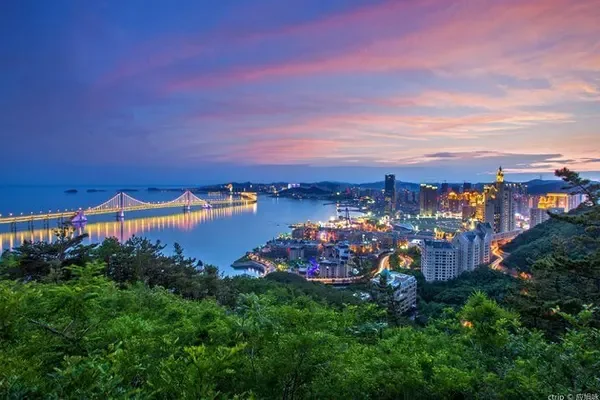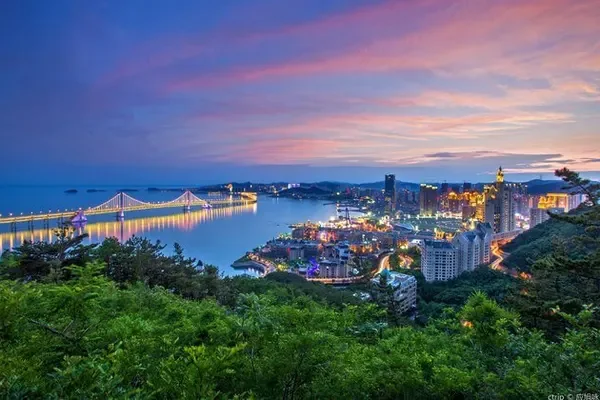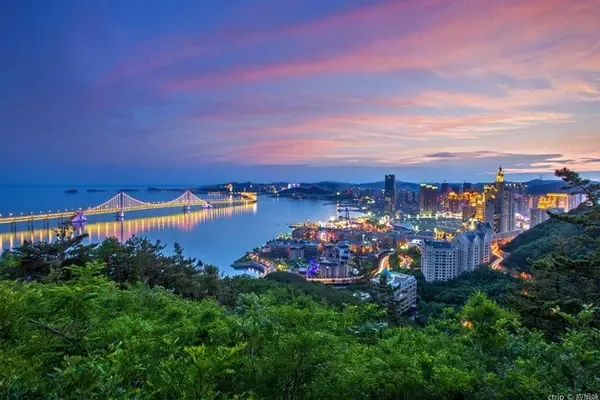You are the shining sun, shining brightly
You are the cool wind in the wild, clear and bright
You are the majestic momentum of Sanjiangyuan
You are the arc of an eagle jumping across the sky
You are an irreversible prayer wheel in the hands of Tibetans

At 14:35 on April 19 8 years ago, I walked on Xizhimen Wai Street, carrying a thick package, and walked into the post office with a little cash of 1,000 yuan left at the end of the month. It was the fifth day after the Yushu earthquake. Today, the young lady at the post office told me that this is already the fifth car mailed today.
Eight years later, at 2:10 pm on July 20, I set off from the West Railway Station with a simple bag on my back. After 22 hours of train and more than 10 hours of car journey. After crossing the Bayan Har Mountain at an altitude of 4824 meters, at this moment, I finally walked into Yushu!

The sixth Tibetan Autonomous Prefecture in my trip to Tibet!

Almost more than 80% of the people around know Yushu, which is inseparable from the earthquake. The moment I walked into Yushu, I could no longer have the slightest connection with the disaster in my memory. A slanting sun came through the window of the car, and the prayer flags on the top of the mountain in the distance fluttered with the wind. There were golden temples emitting eye-catching light. I saw Yushu from two slender cloud bands. The wind greets me.
Yushu sees Yushu for the first time
On the boundary line between the Loess Plateau and the Qinghai-Tibet Plateau, there is a Riyue Mountain. Princess Wencheng of the Tang Dynasty married Tubo Zanpu Songtsen Gampo. In the east, only this stream flows westward, the Daotang River, and Yushu is here. There are all kinds of epic and magnificent legends about the snow-covered grasslands and long songs about the new appearance of the Tibetan grasslands today, as well as the story of Princess Wencheng, and everything here seems to exude a fascinating religious color. Mysterious taste.


The Yushu Batang grassland in this season is simply a beautiful painting, with a radius of tens of kilometers, lush pastures, sea-like flowers, Khamba men riding bold horses, and black tents that have been passed down since ancient times. The black tent woven with yak hair is warm in winter and cool in summer. In 2017, it was included in the Guinness Book of World Records for its largest floor space in the world. Yushu, which is located at the source of the Three Rivers, is known as the "Chinese Water Tower". The three longest rivers in Asia flow down the river, giving birth to the great Chinese civilization and the splendid Southeast Asian civilization.

Standing on the shore, as if listening to the ancient river telling the story of the millennium, the oncoming hot magnificence, and the mysterious feeling that no matter how close you are, the beauty is intoxicating.


horse racing festival
For this prosperous age, this is Yushu's charm!
The Mongolian girl has a natural love for the horse racing festival, and she also had the ambition to gallop on horseback to fight on the battlefield. This time, for the horse racing festival, she was so excited that she lost sleep the night before. Until the next day when the sun was shining and the mulberry smoke was rising, I heard the beautiful folk music of the entire racecourse, and watched the simmering sang cavalry team, national flag team, religious team, Hada team, garland team, and Gesar team. Teams such as the cavalry team, cavalry team, and equestrian team slowly entered the arena; seeing the heroic faces of the Kham Tibetans and the beautiful costumes of the Tibetan girls, this kind of scene is grand and magnificent, and it is unnatural to lose sight of it. A few tears!




The Horse Racing Festival is an annual event on the prairie, and all the people here are dressed up to attend. If you don’t experience the scene yourself, you will not understand how enthusiastic the ethnic minorities can be. The beautiful Zhuoma dressed in costumes and walked on the grassland. The riders galloped holding khatas, and their hearts "burned" to the sound of the national anthem. We all say to find ourselves, and this is a journey to find ourselves.





The horse racing festival lasts for several days every year. This time I can only catch up with the opening ceremony. Of course, I still have some regrets. If anyone still wants to go and has time, they must stay for a few more days. It is said that the competition is even more exciting. , you can see many outstanding players at home and abroad performing "immediate magic"!





Yushu beauty
【Xinzhai Mani Stone Pile】
In Xinzhai Village, Jiegu Town, Yushu, at an altitude of 3,600 meters, here is known as "the world's largest place of blessing and wishing"-Xinzhai Mani Stone Pile! At the same time, it is the only stone mountain built with words in the world.
The mani pile is magnificent and the scale is the largest in the world. The number of individual mani stones is as many as billions, and the total number of mani stones is as many as 2.5 billion at present. Coming here is like walking into a palace of stone scriptures. It is unimaginable that this place is completely formed by folk spontaneous behavior, that is to say, every time believers pray and make a wish, they add a few pieces of mani stones to the top, resulting in the accumulation of the huge "ocean" of Buddhist scriptures.






【Rabbu Monastery】
A road leading to Rabu Monastery: there is the majestic confluence of the three rivers; there is also a playful legend about the scripture-drying stone; there is the mystery of the white tower at the ferry; there is also a strong sense of history in the ancient village of Rabu. This is an excellent humanistic road, and of course an excellent self-driving route. This time, we set off to Rabu Monastery with the local self-driving team in Yushu, and experienced the "Need for Speed" on the real plateau. The cliff is on the right and the river is on the left. How can this feeling of speeding on the road be called "cool"!
It takes about 2 hours to reach Rabu Temple from Yushu. In fact, it is still under construction, but judging from the existing temples, it is already quite large. The majesty of the main hall is full of awe, and it looks extraordinarily magnificent under the sunlight. The mountain opposite the temple is covered with prayer flags, and when the wind comes, it emits a calming sound.








【White Tower at Ferry】
The legend about the Ferry White Tower fascinates me the most. In addition to its important position in religion, even the stories of folklore are quite interesting. It is said that a long time ago, a woman picked up cow dung here, and suddenly felt that the place was extremely fragrant and the rainbow was gorgeous, and suddenly there was a burst of joy. A crystal pagoda gradually emerged from the ground, and the woman buckled the basket in her hand on it in horror. Prevent damage. But early the next morning, I found that a huge pagoda had been built at the place where I dunked the basket yesterday. The omen of auspiciousness can be imagined. So in the local folk songs in Yushu, there is a section sung like this:
Lhasa, enlightenment is man-made
Yushu White Pagoda born from nature
Trekking for thousands of miles
Why not pay homage to the White Tower
It means that "Three steps and one knocking to worship the enlightened Buddha statue in Lhasa, which is thousands of miles away, is not as good as the self-sheng pagoda in Kham, which is close at hand. It can be seen that the status of this white pagoda in the real Tibetan area is particularly important.
Perhaps it is for this reason that the White Pagoda has become a spiritual treasure here. Many people come to the turret every day. And the beauty of the White Pagoda has a kind of spiritual beauty, as if it has absorbed the majesty of the river and used up the sense of spaciousness of the high sky and light clouds. The mountain spring water permeating from the pagoda ground is extremely clear, and under the clear water and blue sky, this white pagoda looks extremely pure. I bowed my head devoutly, as if listening to his Buddhist voice.




【Labu Ancient Village】
I once thought: Under the green mountains and blue waves, the people living here are singing and dancing. There may be many stories left by this castle, and I really want to explore it.
This ancient village located in the mountain stream may be the place that impressed me the most during this trip, because I have never seen such a Tibetan village like a bunker. I have also tried to ask the local residents, but not many people can tell the story here clearly. But among the Tibetan houses with flat eaves, the tallest castle exists like a bunker. I guess there may have been a war here for defense purposes. The adjacent rooms are mostly connected to the highest point. This architectural style reflects the ingenuity of the Tibetans at that time. And this small village can also be described as a good scenery "near mountains and rivers". Sitting here really reminds people of many past events.
It is no problem to complete these scenic spots in one day. Except for the Mani stone pile, the rest of the places are on the road leading to Rabu Monastery. It is recommended to arrange a day to complete the tour.






【Wencheng Princess Temple】
It takes 40 minutes to drive here from Yushu City. The Wencheng Princess Temple, also known as the "Gasa Princess Temple", was built in the Tang Dynasty and has a history of more than 1,300 years. It is an important cultural relic of the "Tangbo Ancient Road". Looking at the prayer flags fluttering here, and the clear river flowing by, there is indeed a sense of geomantic omen, and I can’t help but marvel at the wisdom of the predecessors. At present, it is not allowed to take pictures in the inner hall of Princess Wencheng Temple, and the cultural relics murals inside are really exquisite. The master who explained is quite knowledgeable, and it is a place where you can sit down and listen to the story.






【Jiegu Temple】
Jiegu Temple is one of the most famous temples in the Tibetan area of China. It is famous for its magnificent architecture, many monks, rich cultural relics, and many monks and disciples. In Tibetan, it is called "Jiegu Dunzhugong", which means "Jiegu Yichengzhou", and it is the Sakya temple of the local Zhawu tribe. There are many, many stories about this temple. It is recommended to stay here for an afternoon and listen carefully. The canyon opposite the temple is beautiful, suitable for taking pictures and enjoying the whole picture of Yushu City







【Longbaotan National Nature Reserve】
Longbaotan National Nature Reserve is located in Longbao Town, Yushu County, Yushu Tibetan Autonomous Prefecture, Qinghai Province, about 75 kilometers away from Jiegu Town, Yushu Prefecture. The main protection objects here are waterfowl and habitats such as black-necked cranes, and it is also one of the highest protected areas in the world. In fact, you need to try your luck to come here, but it is really a paradise for photography lovers. If you have time to recommend staying for a few days, you may have a pleasant surprise~






【Yushu Earthquake Memorial】
From my original point of view, I will really feel bad after reading this place. The scene at that time is vivid in my memory. After those disasters, our love is boundless, our unity is as one, and the new Yushu is exuding more and more charm.



That month, I shake all the prayer wheels,
Not for extension, just for touching your fingertips;
That year, I kowtowed and crawled on the mountain road,
Not for the audience, just for your warmth.
It is said that Tsangyang Gyatso is hidden in the "Tangbo Ancient Road", but I like the poignant beauty that has been there, and has created texts that have endless aftertaste for generations. I like the days in Yushu: reciting in the face of the sunset, as if giving myself wholeheartedly to this beautiful small town at that moment, kissing the blue sky, imagining the golden rim covered with sunshine around me, in this pure land In, wandering thousands of times~




Yushu Travel Tips
schedule:
day1: Beijing - Xining train, Xining - Gonghe 3.5 hours by car, check in Gonghe Hotel
day2: Gonghe - Yushu 10 hours by car
day3: Xinzhai Mani Stone Pagoda-- Sanjiangyuan Monument--Tang Monk's Sutra Platform (passage)--Ferry White Tower--Labu Folk Village--Labo Monastery
day4: Wencheng Princess Temple - Lebagou - Yushu Earthquake Relief Memorial Hall
day5: Yushu Horse Racing Festival - Jiegu Temple - Longbaotan Nature Reserve
day6: Yushu - Xining - Beijing
transportation:
When traveling in Qinghai, the most convenient thing is to charter a car and rent a car. The chartered driver we chose this time is very reliable. Mr. Luo is very familiar with various scenic spots, and you know that when walking on the grassland, the most urgent thing is the toilet problem. As long as you tell Master Luo in advance, he will definitely help you find a relative. Spectrum place. Of course, chartered cars are divided into off-season and peak season, and there must be a price difference. The daily fare of 3,000 yuan is calculated among ten of us, and it is quite cost-effective. Master Luo, who we chartered this time, is still very good~ If you need to go, you can ask me for a phone call. He is really reliable and reliable, and he knows the weather and road conditions in Tibet very well.
cost:
Except for train tickets and chartered car fees, all scenic spots in Yushu do not charge tickets.
High anti problem:
Regarding the issue of altitude sickness, I would like to talk about my personal experience in the Tibetan areas these few times.
First of all, don't think that it will be the same if you are in good health or not in good health. My personal experience is that the so-called "people who are not in good health generally have no problems, but those who are in good health will have problems with high oxygen demand" is true. Unreliable.
Secondly, don't be frightened by the high reaction. This is actually a very normal reaction. Don't get too excited, keep a calm mind, drink plenty of water, and walk slowly. Of course, you must take some medicines in advance according to your physical condition. After all, high anti-reflex is really not a joke.

I personally think that Yushu’s reaction seems to be slightly stronger than that of Lhasa. Of course, this situation is also related to itself. In short, it is best not to worry too much or take it lightly.
Accommodation recommendation:
Republic accommodation recommendation:
Generally speaking, when entering Yushu, you can choose two places as transit points, one is Maduo and the other is Gonghe. Relatively speaking, the poster of Maduo is slightly higher, and it does not have the urbanization of Republic, so it is recommended that you choose the first stop to Republic. We booked the Republic Longhao Hotel this time. The hotel's facilities should be the best in the area, and the second floor of the hotel leads directly to the large square outside, with a good view. There are quite a lot of snack restaurants near the hotel, but I think the hotel's meals are also good.






Recommended accommodation in Yushu:
Gesar Palace Hotel, among the four major hotels in Yushu, I think it is the best and most distinctive hotel.
First of all, the story of King Gesar itself is attractive enough. This hotel is located near King Gesar Square. The location is not too good~ The Yushu State Museum is just outside the door. There are supermarkets and delicacies on the left and right. For tourists Really super convenient.
Secondly, the room facilities are good, the oxygen mask in the plateau area, the whole house oxygenation equipment, the brand new USB interface, etc., are all brand new equipment. It can be said to be quite in place!





Once again, the hotel has breakfast, lunch and dinner, and you can choose according to your preferences.
Of course, the waiters in the hotel are pretty handsome, and the Tibetan brothers and sisters are super beautiful.


